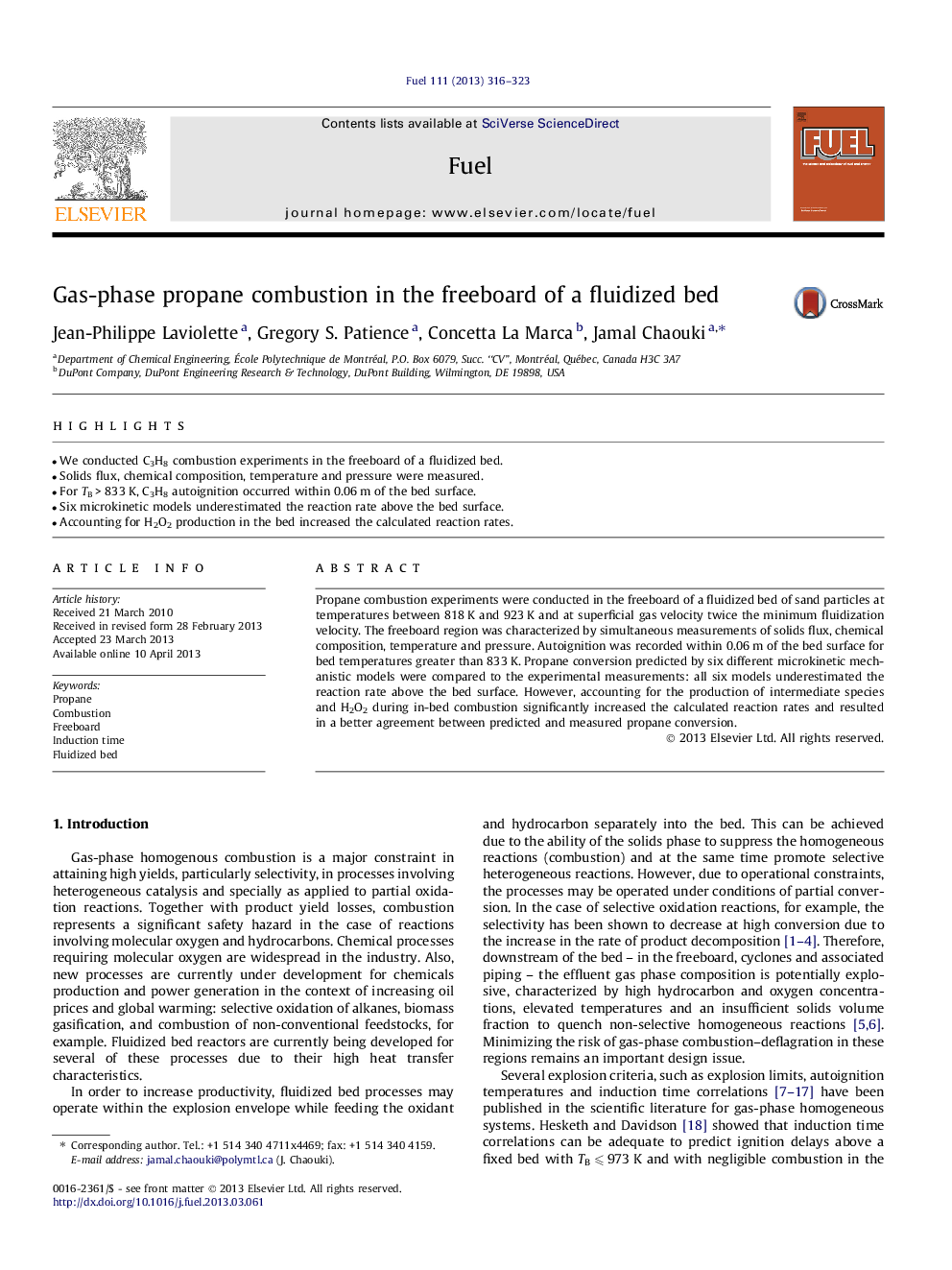| Article ID | Journal | Published Year | Pages | File Type |
|---|---|---|---|---|
| 6640396 | Fuel | 2013 | 8 Pages |
Abstract
Propane combustion experiments were conducted in the freeboard of a fluidized bed of sand particles at temperatures between 818Â K and 923Â K and at superficial gas velocity twice the minimum fluidization velocity. The freeboard region was characterized by simultaneous measurements of solids flux, chemical composition, temperature and pressure. Autoignition was recorded within 0.06Â m of the bed surface for bed temperatures greater than 833Â K. Propane conversion predicted by six different microkinetic mechanistic models were compared to the experimental measurements: all six models underestimated the reaction rate above the bed surface. However, accounting for the production of intermediate species and H2O2 during in-bed combustion significantly increased the calculated reaction rates and resulted in a better agreement between predicted and measured propane conversion.
Related Topics
Physical Sciences and Engineering
Chemical Engineering
Chemical Engineering (General)
Authors
Jean-Philippe Laviolette, Gregory S. Patience, Concetta La Marca, Jamal Chaouki,
